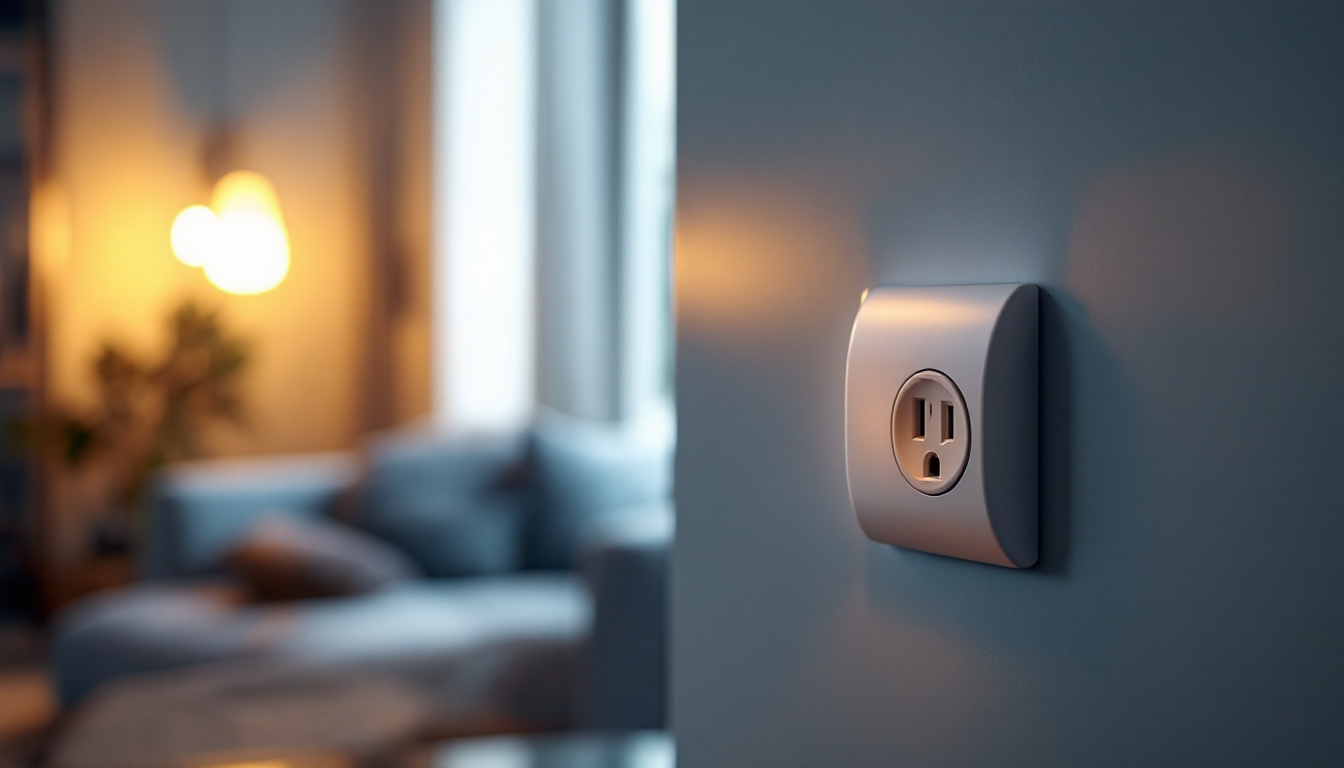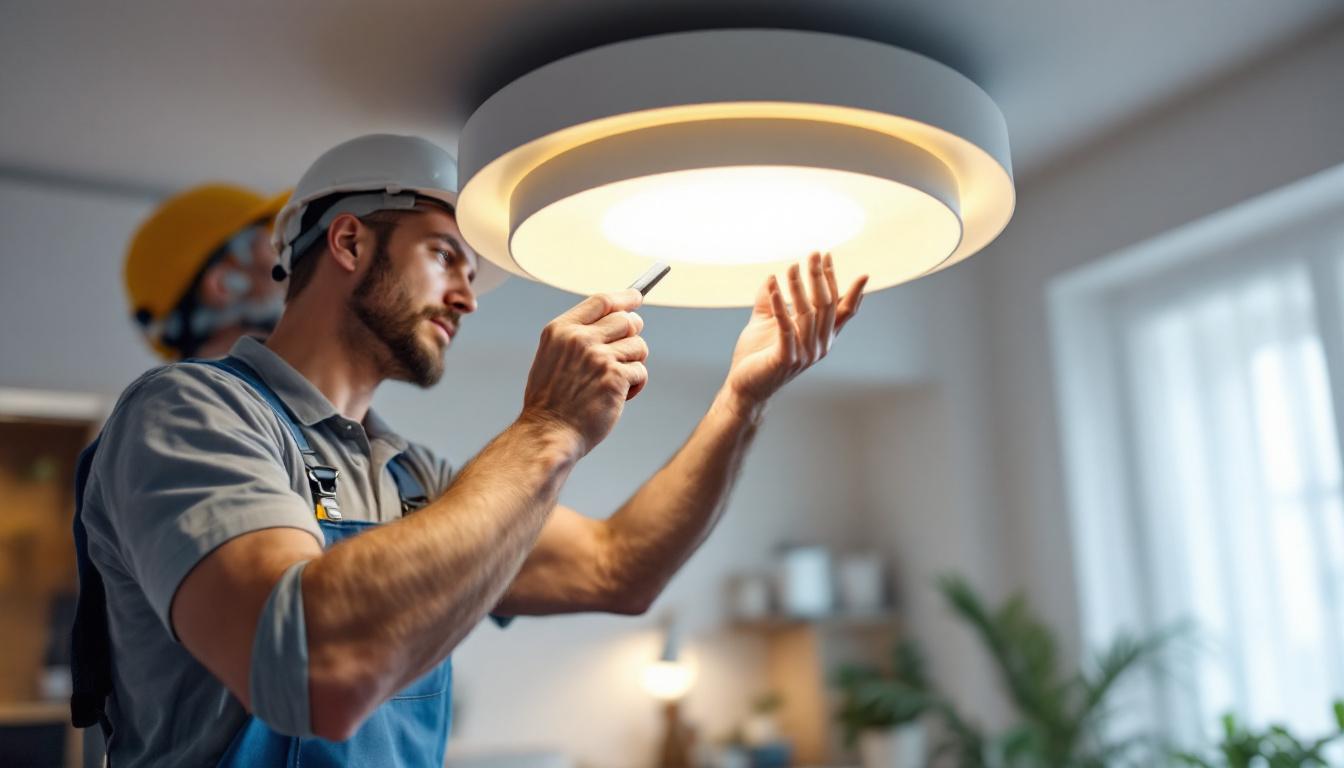
In the ever-evolving landscape of energy-efficient lighting, understanding the role of outlets and switches is crucial for lighting contractors. These components not only facilitate the operation of lighting systems but also contribute significantly to energy conservation. This article delves into the importance of outlets and switches, exploring their functionality, types, and best practices for energy efficiency.
Outlets are integral to any electrical system, serving as the connection point for various devices, including lighting fixtures. They provide the necessary power supply, enabling lights to function effectively. However, the choice of outlets can greatly influence energy consumption and overall efficiency.
There are several types of outlets available, each designed for specific applications. Standard duplex outlets are the most common, used in residential and commercial settings. However, specialized outlets, such as GFCI (Ground Fault Circuit Interrupter) and AFCI (Arc Fault Circuit Interrupter), offer additional safety features that can prevent electrical hazards. GFCI outlets are particularly important in areas where water is present, such as kitchens and bathrooms, as they can quickly cut off power in the event of a ground fault, reducing the risk of electric shock. On the other hand, AFCI outlets are designed to detect and prevent electrical arcs that can lead to fires, making them essential in living spaces where electrical devices are frequently used.
Moreover, smart outlets have gained popularity in recent years. These outlets can be controlled remotely via smartphones or smart home systems, allowing users to turn lights on and off, set schedules, and monitor energy usage. This level of control not only enhances convenience but also promotes energy efficiency. For instance, users can program their smart outlets to turn off lights during the day when natural light is abundant, further reducing electricity consumption. Additionally, many smart outlets provide real-time data on energy usage, empowering homeowners to make informed decisions about their energy consumption patterns.
To maximize energy efficiency, contractors should consider installing outlets that are designed to minimize energy waste. For instance, using outlets with built-in timers or motion sensors can help ensure that lights are only on when needed. These features are particularly useful in spaces like hallways or bathrooms, where lights can easily be left on unintentionally. Additionally, incorporating USB outlets can reduce the need for adapters, streamlining the charging process for devices while conserving energy. This is especially beneficial in modern homes where multiple devices require charging, as it eliminates the clutter of multiple chargers and power strips.
Furthermore, ensuring proper installation and maintenance of outlets is essential. Loose connections can lead to energy loss and potential safety hazards. Regular inspections can help identify issues early, ensuring that outlets function optimally and contribute to energy savings. It is also advisable to use high-quality materials and components during installation, as this can enhance the durability and performance of the outlets over time. For instance, using outlets with better insulation can prevent energy loss and improve the overall efficiency of the electrical system. Additionally, educating homeowners about the importance of outlet maintenance, such as checking for signs of wear or damage, can help prolong the life of their lighting systems and ensure a safer living environment.
Switches are another critical component of lighting systems, allowing users to control when and how lights are used. The design and functionality of switches can significantly impact energy efficiency, making it essential for contractors to stay informed about the latest advancements in switch technology.
Traditional toggle switches have long been the standard for controlling lights. However, modern alternatives, such as dimmer switches and smart switches, offer enhanced control over lighting levels and energy consumption. Dimmer switches allow users to adjust the brightness of lights, which can lead to substantial energy savings, especially in spaces where full brightness is not required. By creating a softer ambiance, dimmers can also enhance the aesthetic quality of a room, making it more inviting and comfortable for occupants.
Smart switches, on the other hand, integrate with home automation systems, enabling remote control and scheduling. This technology empowers users to turn off lights when they leave a room or adjust settings based on natural light availability, further optimizing energy use. Some smart switches even feature voice control capabilities, allowing users to manage their lighting with simple voice commands, thus adding a layer of convenience and accessibility for individuals with mobility challenges. Furthermore, many smart switches can be programmed to work in conjunction with other smart devices, such as motion sensors and smart thermostats, creating a holistic approach to home energy management.
When installing switches, contractors should prioritize accessibility and ease of use. Placing switches near entry points and in logical locations enhances user experience and encourages energy-saving habits. Additionally, labeling switches can help users understand their functions, promoting efficient use of lighting systems. This is particularly important in multi-room environments where different lighting schemes may be in place, as clear labeling can prevent confusion and ensure that users can easily adjust their lighting to suit their needs.
Another best practice is to consider the use of multi-way switches in larger spaces. These switches allow for control of a single light fixture from multiple locations, reducing the likelihood of leaving lights on unnecessarily. This is particularly beneficial in hallways, staircases, and large rooms. Moreover, incorporating occupancy sensors alongside multi-way switches can further enhance energy efficiency by automatically turning lights on when someone enters a space and off when they leave, ensuring that lights are only used when needed. This combination of technology not only promotes energy conservation but also extends the lifespan of light bulbs, reducing maintenance costs for homeowners and businesses alike.
The synergy between outlets and switches plays a pivotal role in creating an energy-efficient lighting system. By integrating these components effectively, contractors can design systems that not only meet the needs of users but also contribute to energy conservation efforts.
The rise of smart home technology has opened up new possibilities for integrating outlets and switches. By utilizing smart outlets and switches, contractors can create a cohesive system that allows for centralized control of lighting and other devices. This integration can lead to significant energy savings, as users can monitor and adjust their energy consumption in real-time.
For example, a smart lighting system can automatically adjust based on the time of day or occupancy, ensuring that lights are only used when necessary. This level of automation not only enhances convenience but also supports sustainability goals.
Incorporating energy monitoring solutions into outlets and switches can provide valuable insights into energy usage patterns. These tools can help identify areas where energy is being wasted and inform strategies for improvement. For instance, if a particular outlet consistently shows high energy consumption, it may indicate that devices are being left plugged in unnecessarily.
Contractors can recommend energy monitoring systems to clients, empowering them to take control of their energy use. This proactive approach not only fosters energy efficiency but also encourages a culture of sustainability within the community.
While understanding the importance of outlets and switches is crucial, it is equally important to be aware of common pitfalls that can hinder energy efficiency. By avoiding these mistakes, contractors can ensure that their lighting systems are optimized for performance and sustainability.
One of the most significant mistakes contractors can make is overlooking the importance of proper installation. Outlets and switches must be installed according to local codes and manufacturer specifications to ensure safety and efficiency. Poor installation can lead to energy loss, electrical hazards, and costly repairs.
Additionally, using the wrong type of outlet or switch for a specific application can compromise performance. For instance, installing a standard outlet in a wet area without GFCI protection can pose serious safety risks. Ensuring that the right components are used in the right locations is essential for creating a safe and efficient lighting system.
Another common oversight is neglecting to educate clients about the features and benefits of their new outlets and switches. Providing guidance on how to use smart technology, dimmers, and energy monitoring tools can empower users to make informed decisions about their energy consumption.
Contractors should take the time to explain how different components work and offer tips for maximizing energy efficiency. This education not only enhances user satisfaction but also fosters a sense of responsibility towards energy conservation.
As technology continues to advance, the future of outlets and switches in energy-efficient lighting looks promising. Innovations in smart technology, energy monitoring, and sustainable materials are set to revolutionize the way these components function.
Emerging technologies, such as wireless charging outlets and energy harvesting switches, are on the horizon. These innovations can further enhance the efficiency of lighting systems by reducing reliance on traditional power sources. For instance, wireless charging outlets can eliminate the need for multiple chargers, streamlining the charging process while conserving energy.
Moreover, energy harvesting switches can generate power from user interactions, such as pressing a button. This self-sustaining technology could reduce the overall energy demand of lighting systems, contributing to a more sustainable future.
As the push for energy efficiency continues, regulatory changes and standards are likely to evolve. Contractors should stay informed about updates in building codes and energy efficiency guidelines to ensure compliance and promote best practices in their projects.
By aligning with these standards, contractors can not only enhance the performance of their lighting systems but also position themselves as leaders in the industry, committed to sustainability and energy conservation.
Understanding the role of outlets and switches is essential for lighting contractors aiming to create energy-efficient lighting systems. By selecting the right components, integrating smart technology, and educating clients, contractors can significantly impact energy consumption and promote sustainability.
As technology advances and regulations evolve, staying informed about the latest trends and best practices will be crucial. By prioritizing energy efficiency in every project, contractors can contribute to a greener future while meeting the needs of their clients.
Ready to take your lighting projects to the next level? At LumenWholesale, we provide you with the cutting-edge, energy-efficient outlets and switches you need to stay ahead in the industry. Our commitment to quality and affordability ensures that you can equip your lighting systems with the best products without breaking the bank. Say goodbye to local distributor markups and hello to our spec-grade lighting solutions. Make the smart choice for your business and visit LumenWholesale today to explore our selection and enjoy the benefits of wholesale lighting at the best value.

Discover essential compliance guidelines for lamp post street lights that every lighting contractor should know.

Discover how pot light covers can transform your lighting projects and boost your success as a contractor.

Discover how the Sunrise Sunset Timer is revolutionizing the lighting industry by offering contractors precise control over natural light integration.

Explore the transformative role of light fixtures in modern interior design and their rising significance in the lighting industry.